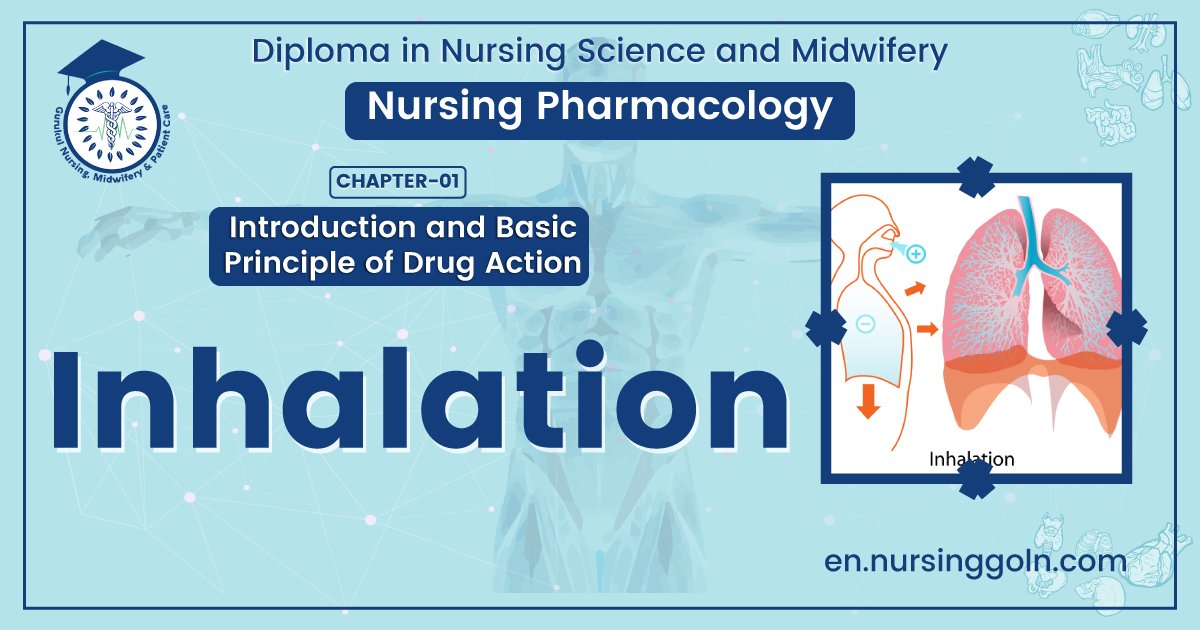Pharmacology Inhalation – This book covers the entire syllabus of “Pharmacology” prescribed by BNMC- for diploma in nursing science & midwifery students. We tried to accommodate the latest information and topics. This book is an examination set up according to the teachers’ lectures and examination questions.
At the end of the book, previous questions are given. We hope in touch with the book students’ knowledge will be upgraded and flourish. The unique way of presentation may make your reading of the book a pleasurable experience.

Pharmacology Inhalation
Volatile liquids and gases are given by inhalation for systemic action, e.g. general anaesthetics. Absorption takes place from the vast surface of alveoli-action is very rapid. When administration is discontinued the drug diffuses back and is rapidly eliminated in expired air.
Advantages of inhalation route:
- Drugs can be rapidly taken up or eliminated
- Much higher concentration is achieved at the site of action
- Drugs directly delivered to the site of action
- Avoid first pass metabolism
- Emergency route
- Quick onset of action
- Bioavailability 5 to <100%
Disadvantage of inhalation route:
- Special apparatus is needed
- Irritant drug usually cannot be administered
- Prolonged inhalation sometimes cause adverse effects (Oropharyngeal candidiasis with prolong steroid inhalation).
NICE TO KNOW
Important table regarding routes of drug administration

| Route of Administration | Absorption Pattern | Advantages | Disadvantages |
| Oral | Variable; affected by many factors | Safest and most common, convenient, and economical route of administration mixtures
|
|
| Subcutaneous | Depends on drug diluents: Aqueous solution: prompt Depot preparations slow and sustained |
|
|
| Transdermal (patch) | Slow and sustained |
|
|
| Rectal | Erratic and variable |
|
|
| Inhalation | Systemic absorption may occur, this is not always desirable |
|
|
| Sublingual | Depends on the drug: Few drugs (for example, nitroglycerin) have rapid, direct systemic absorption Most drugs erratically or incompletely absorbed |
|
|

Read more:
